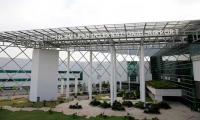The latest Programme for International Student Assessment (PISA) results – released on December 5, 2023 – provides valuable insights into the academic performance and well-being of 15-year-old students from 81 economies worldwide.
Conducted amidst the ongoing effects of the Covid-19 pandemic, the 2022 PISA test captures data on student outcomes, wellbeing, and equity, making it a significant study in assessing the impact of global disruptions on education.
PISA tests claim to create a unique assessment that differs from traditional tests. The report states that in a world that increasingly values individuals for their ability to apply knowledge, PISA goes beyond assessing rote memorization. To succeed in PISA, students must demonstrate their ability to think critically, and creatively, and extrapolate from what they have learned.
For example, the report reiterates that students in the PISA mathematics assessment must apply mathematical concepts to real-world problems, reason mathematically, and interpret solutions. By teaching children how to learn instead of just what to learn, they can adapt to unanticipated problems in life, which may not be directly related to their school experiences.
Although some argue that PISA tests are unfair for presenting unfamiliar problems, it is important to note that life itself is unfair, and the real challenge is to solve problems that cannot be anticipated today as maintained in the report.
The report further shows that, since the PISA 2018 tests, about 31 countries have maintained or improved their math performance, including Australia, Japan, Korea, Singapore, and Switzerland. These countries had shorter school closures, fewer remote learning obstacles, and ongoing teacher and parent support.
Ten countries, including Canada, Finland, Hong Kong, Ireland, Denmark, Japan, South Korea, Latvia, Macao (China), and the UK, have accomplished high levels of math proficiency and socio-economic fairness. According to the PISA 2022 assessment, there has been a significant decrease in academic performance across OECD countries. The results show a decline of 10 score points in reading and nearly 15 score points in mathematics, equivalent to approximately three-quarters of a year’s worth of learning.
This decline in mathematics performance is three times greater than any previous consecutive change, and a considerable proportion of 15-year-olds, around one in four, are now categorized as low performers in mathematics, reading, and science.
The report notes that this decline cannot be solely attributed to the impact of the Covid-19 pandemic, as scores in reading and science were already decreasing before the pandemic. Furthermore, several countries, including Belgium, Canada, Czechia, Finland, France, Hungary, Iceland, the Netherlands, New Zealand, and the Slovak Republic, were already experiencing negative trends in mathematics performance before 2018.
The shift to remote learning during school closures has underscored the importance of technological proficiency in education systems. The report’s findings indicate that, on average, three-quarters of students in OECD countries feel confident in using learning-management systems, school learning platforms, and video communication programs.
Students who dedicate up to an hour per day to digital learning activities score 14 points higher in mathematics compared to those who spend no time, even after considering socio-economic factors. This positive correlation is observed in more than half of the systems with available data. However, the use of technology for leisure purposes, such as mobile phones, appears to have a detrimental impact on academic performance.
Distractions caused by other students using digital devices during mathematics lessons can lead to a 15-point decrease in scores, even after adjusting for socioeconomic factors.
During disruptions, teachers’ support plays a critical role, particularly in providing additional pedagogical and motivational assistance. Access to teacher help has shown the strongest correlation with mathematics performance across the OECD, with students who had good access scoring an average of 15 points higher.
These students also demonstrated greater confidence in autonomous and remote learning. However, the data revealed that one in five students received extra help only in some mathematics lessons, while approximately eight percent rarely or never received additional support.
Parental engagement in student learning showed positive effects on mathematics performance, especially for disadvantaged students. Active parental support can have a decisive impact on students’ learning outcomes. Unfortunately, between 2018 and 2022, there was a substantial decrease in parental involvement, with a 10-percentage point drop in the share of students in schools where parents initiated discussions about their child’s progress, on average across OECD countries.
It is shown that there is no correlation between extra investment and student performance for many OECD countries that spend more per student. Despite starting from low-income levels, countries like Korea and Singapore can establish top-tier education systems by prioritizing quality teaching over class size and funding mechanisms that align resources with needs.
In a nutshell, as evident from the report’s findings, using technology moderately seems to be a pleasant spot. Policymakers should understand that no technology at all can be as ineffective as total and limitless integration.
Smart integration of technology within and beyond the classroom seems to be the way forward. By leveraging flexible learning models, technology integration, and contingency planning, education systems can better ensure continuity of education and minimize the impact of crises on students’ learning outcomes.
In addition, as Pakistan is not currently part of the PISA assessments, it must participate in the PISA assessments to allow its education system to benchmark against other countries and gain insights into areas of strength and areas that need improvement.
PISA is widely recognized as a global benchmark for assessing educational outcomes. By participating, Pakistan can demonstrate its commitment to improving education and aligning with international standards. This can contribute to enhancing the country’s competitiveness in the global knowledge economy.
Participation in PISA will also open doors for international collaboration and the exchange of best practices. It will also allow policymakers and researchers to engage with international networks, share experiences, and learn from successful educational strategies implemented in other countries.
The writer is an assistant professor at the Pakistan Institute of Development Economics (PIDE) and can be reached at: jehangir@pide.org.pk
Chinese philosopher Mencius prophesized 3000 years ago that state that does not employ worthy perishes
Over past two decades, rapid and often chaotic development has increasingly defined Islamabad's landscape
Donald Trump's entry into White House is going to be stormy
Most notable is dangerous surge in conflict at scale not seen since last world war
Coordinated attacks sent wave of insecurity across country, tarnished Pakistan's image globally
For now, IMF agreement provides essential cushion to help Pakistan return from the brink of Sri-Lanka-type default on...







